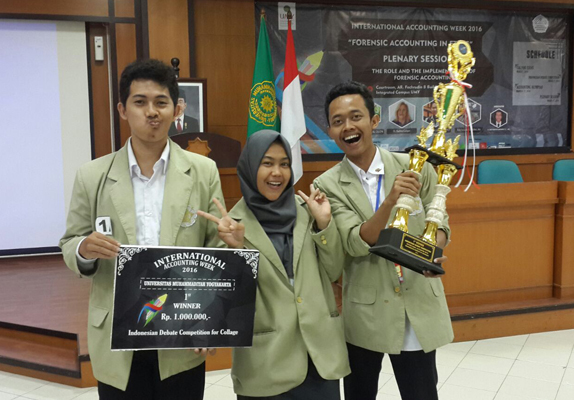
Dodol is a traditional Indonesian food. Because of its sweet taste and chewy texture that makes it the preferred food of various backgrounds, ranging from children to adults.
Dodol itself is made from processed coconut milk, glutinous rice flour, granulated sugar, brown sugar, and salt. Range of products of dodol has use plastic as packaging.
The use of plastic containers for packaging allegedly can cause health problems for humans. Health problems arise due to the migration of vinyl chloride substances to food.
“Vinyl chloride and acrylonitrile are dangerous monomers as they could potentially cause cancer. Apart from giving adverse effects to health, plastic packaging can influence the microbial contamination during storage,” said Ridwan, student of Department of Animal Science Industry, Faculty of Animal Science UGM, Wednesday ( 6/4).
Seeing these conditions, Ridwan with four of his friends from the same departments and faculties, (Elisa Nirmalawati, Ahmad Solihin, Nurlissa Uke Dessy, and Lintang Anggoro) make innovation research by utilizing chicken shank as dodol wrap. Utilization of chicken leg skin to make dodol wrapper allows people to chew the dodol directly.
Through the Research Student Creativity Program (PKM-P), Ridwan explained their decision to use chicken shank as an alternative to replace the plastic is to create natural casing as dodol packaging. This natural casings use chicken’s shank as raw material of gelatine. Gelatine is a protein produced by partial hydrolysis of collagen.
Gelatine, said Ridwan, is applied as edible films and edible coatings. Edible film is a thin layer, made of a material which is hydraulic of protein or carbohydrate and fat that serves as the packaging material that gives the effect of preservation, while the edible coating is a thin layer that can be consumed and used in foods by wrapping, dipping, brushing or spraying to provide selective barrier against the transfer of gas, vapor and dissolved materials as well as protection against mechanical damage.
“This study is important because gelatine edible film packaging has advantages as a natural alternative that is able to withstand microbial contamination during storage,” said Ridwan.
Even so, according to Ridwan, it is still necessary to test the quality characteristics. Quality test covers thickness, tensile strength, elongation and as natural packaging applications to the storage time which includes water content, pH value, water activity and microbial contamination, which refers to ISO 7388 about food safety standardization of microbial contamination.
Ridwan emphasized the development of edible films in food can provide better product quality, prolong durability and can be environmentally friendly packaging materials. Edible film is certainly providing an alternative packaging material that does not have an impact on environmental pollution because it uses renewable materials with affordable price.
“With this research, we hope this innovation can be used by the community as a guide in making the gelatine out of chicken legs skin, and applied to wrap dodol,” said Ridwan.


